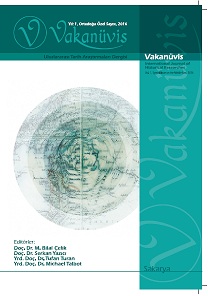Osmanlı Arap Vilayetleri, Arabizm Ve Arap Milliyetçiliği
The Ottoman Arab Provinces, Arabism And Arab Nationalism
Author(s): Davut HutSubject(s): History, Nationalism Studies, The Ottoman Empire
Published by: Serkan YAZICI
Keywords: The Ottoman Arab Provinces; Arabism; Arab Nationalism; Abdulhamit II; The Second Constitution; The Unionists;
Summary/Abstract: This paper analyzes the transformation process of the Arab awakening emerged in the Arab provinces in the nineteenth century into Arab nationalism and Arabism over time. The administrative weakness, Napoleon's invasion of Egypt, strengthening of Wahhabi movement, the revolt of Cavallan Mehmet Ali Pasha in Egypt, rising of colonialism and the missionary activities and the development of cultural and political relations with Europe led to the emergence of “Arabism”. This movement began to develop in the second half of the nineteenth century and showed improvement especially in Syria, Lebanon and Egypt. The Arabists were active in different domains such as literature, culture and education. They also founded schools and associations. In early years of the reign of Abdulhamit II, Arabist movement showed results in Syria and Lebanon. The fact that the Sultan paid attention to the Arab provinces and followed an "Islamic unity" policy prevented the strengthening of Arabism. On the other hand, many committees and societies were established, and Arabic books, newspapers and magazines were published. Arabism made a significant progress during the second constitutionalist period. This period is a milestone in terms of both Arab nationalism and Turkish nationalism. Turkish nationalism, emerged as a response to increasing European intervention and pressure, and led to the strengthening of Arab nationalism. The Arabists established associations and issued a large number of newspapers in the free environment of the Second Constitutionalist period. They showed local reactions to the European influence. These reactions were the reflections of proto-Arab nationalism. During the Second Constitutionalist period, Arabists demanded more Arab reforms, decentralized local governance, recognition of Arabic as an official language, employment of more Arabs in the local bureaucracy and political rights for the Arabs. The mandatory use of the Turkish language in the Arab provinces caused charging of the Unionists with “Turkism”, as well as unrest in the region. As a result, Arab nationalism gained a political characteristic during the Second Constitutionalist period. In 1913 Arab Congress was held. However, separation and independence weren’t dealt with in the Congress. After all, a treaty was signed between the Unionists and Arabists. Arab nationalism which aimed independence and developed against the Ottoman / Turkish sovereignty emerged in the First World War. However, most of the Arabs remained loyal to the Caliphate and the Ottoman Empire during the war. Nevertheless, some of the Arabs revolted under the leadership of the Emir of Mecca, Sharif Hussein. At the end of the war, Arab provinces were occupied by the French and the British.
Journal: Vakanüvis- Uluslararası Tarih Araştırmaları Dergisi
- Issue Year: 1/2016
- Issue No: Spec.issue
- Page Range: 105-150
- Page Count: 46
- Language: Turkish

